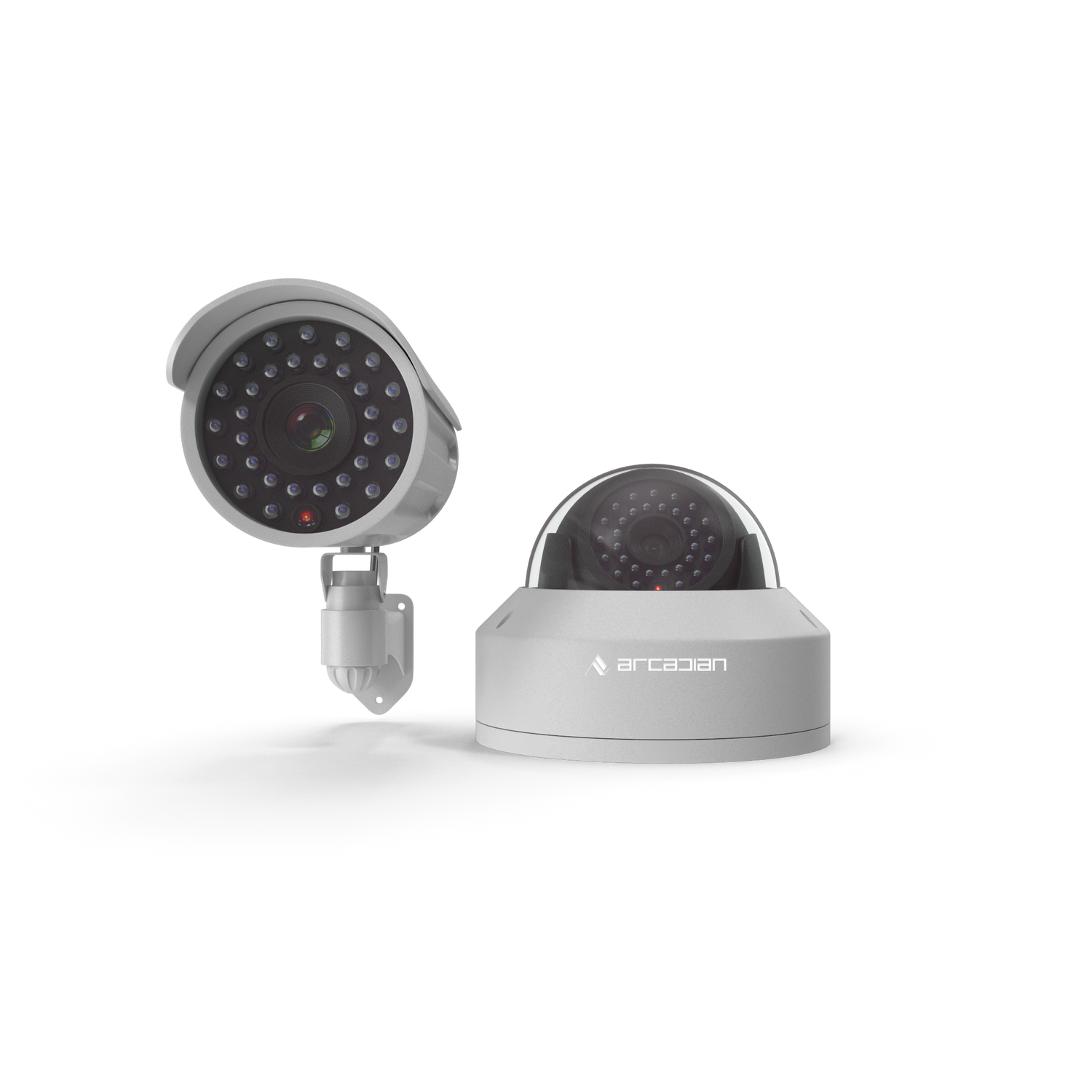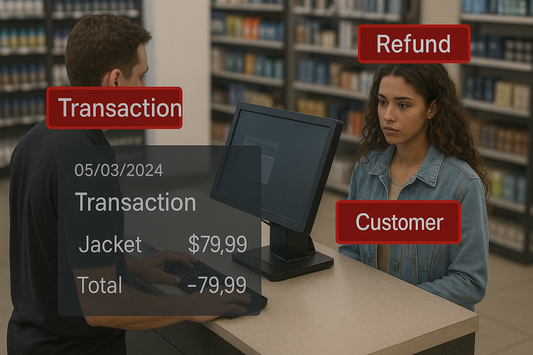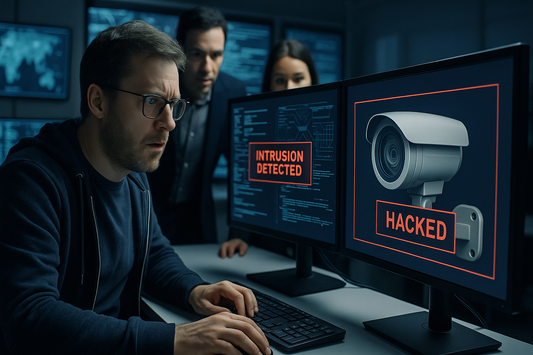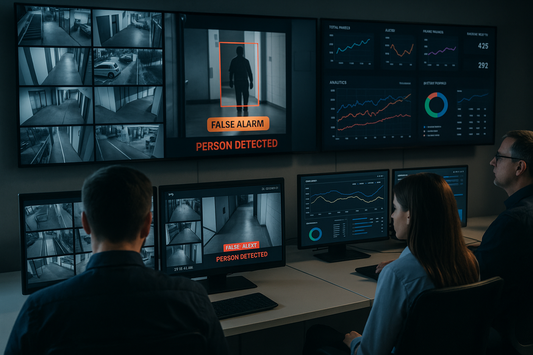The Invisible Attack You’re Overlooking: Why Your “Secure” Surveillance Cameras Are a Backdoor to Hackers
You think your cameras protect you. But what if they’re the entry point for hackers? Discover the unseen attack surface behind modern CCTV and how ArcadianAI’s secure architecture stops intrusions before they start.
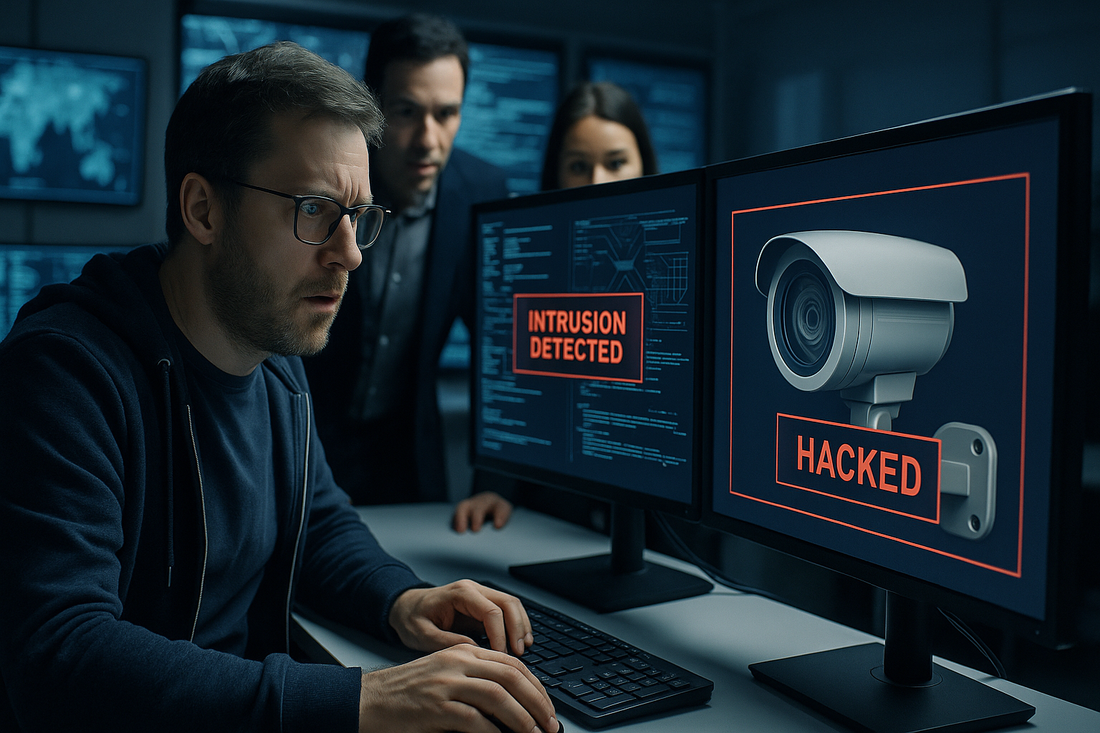
- Introduction
- Quick Summary / Key Takeaways
- Background & Relevance
- The Hidden Attack Surface in “Secure” Cameras
- Real-World Incidents You Can’t Ignore
- Why Organizations Keep Missing the Problem
- The Security Checklist Every Organization Should Follow
- How ArcadianAI Locks the Backdoor
- Comparison: Legacy vs. ArcadianAI
- Common Questions (FAQ)
- Conclusion & Call to Action
- Security Glossary (2025 Edition)
Introduction
Your network is protected—or so you think. You’ve got firewalls, antivirus, and MFA across every endpoint. But there’s one system almost every organization forgets to secure: its cameras.
In 2021, hackers breached more than 150,000 security cameras across hospitals, prisons, and Fortune 500 offices by exploiting a single cloud surveillance vendor. The irony was brutal—systems built to protect became the perfect backdoor.
At ArcadianAI, we see this pattern every day. Decision-makers assume cameras sit safely “outside” their IT perimeter. In reality, they’re fully connected IoT devices running complex software, often outdated and unmonitored. That combination makes them irresistible to cybercriminals.
This article explores how attackers target camera networks, the real breaches you probably never heard about, and how ArcadianAI’s secure edge intelligence architecture prevents these threats at the source.
Quick Summary / Key Takeaways
-
Cameras are among the easiest network devices to hack.
-
Physical security and cybersecurity often operate in dangerous silos.
-
Unpatched firmware, weak encryption, and poor segmentation invite intruders.
-
Real-world breaches (Verkada, Dahua, ADT) prove this isn’t theoretical.
-
ArcadianAI eliminates these vulnerabilities through secure edge modules, anomaly detection, and self-healing architecture.
Background & Relevance
According to Omdia’s 2025 IoT Security Outlook, over 63% of enterprises with camera deployments have not implemented firmware patching policies. Meanwhile, CISA reports a 280% year-over-year increase in camera-based intrusion attempts since 2023.
Hackers know two things: (1) cameras are everywhere, and (2) no one is watching them—ironically. Every connected lens, microphone, or NVR port is a potential doorway into the corporate network.
As digital transformation accelerates, ignoring this convergence between physical and cyber security is no longer an option.
The Hidden Attack Surface in “Secure” Cameras
1. Firmware Exploits and Zero-Days
Most IP cameras run embedded Linux or proprietary OS builds. A single buffer overflow in their image processor or network driver can give attackers root access. The infamous “Devil’s Ivy” vulnerability exposed millions of devices by exploiting a simple library flaw in gSOAP.
2. Denial-of-Service and Resource Hijacking
Attackers often flood camera streams to crash or reboot them. In large deployments, this can blind entire sites—just long enough for real-world intrusions.
3. Unencrypted Streams and Man-in-the-Middle Attacks
Unsecured RTSP feeds allow live video interception, manipulation, or replay. Even encrypted channels can be downgraded through weak cipher negotiation.
4. Lateral Movement Across the Network
Once a hacker owns one camera, they can pivot—scanning internal servers, stealing credentials, or infecting neighboring systems. It’s the cybersecurity equivalent of leaving a side door unlocked in a skyscraper.
5. Botnet Recruitment and Ransomware
From Mirai to Mozi, millions of cameras have been enslaved into botnets, used for DDoS attacks or crypto-mining. Ransomware gangs now use similar techniques to extort companies by shutting down or leaking footage.
6. Vendor SDKs and P2P Backdoors
Flaws in ThroughTek’s Kalay SDK (used in thousands of consumer and enterprise cameras) allowed complete hijacking of live feeds. Attackers could even push malicious firmware updates—remotely.
7. End-of-Life Devices
When vendors stop issuing patches, cameras become ticking time bombs. Many businesses still run unsupported models from Hikvision, Dahua, or Uniview, unaware they harbor unfixable vulnerabilities.
Real-World Incidents You Can’t Ignore
-
Verkada Breach (2021) – Hackers accessed live feeds from 150,000 cameras inside Tesla factories, hospitals, and schools through stolen admin credentials.
-
ADT Insider Abuse (2022) – A technician illegally viewed and recorded customer camera feeds over 9,000 times.
-
Bitsight TRACE Report (2025) – Found 40,000 publicly exposed camera streams online—many in corporate or municipal networks.
-
Dahua Backdoors (2023) – Hidden code in firmware allowed remote logins without authentication; devices were added to botnets within weeks.
These are not isolated “tech” stories—they’re operational failures that expose sensitive facilities, customer data, and even law enforcement footage.
Why Organizations Keep Missing the Problem
The Silo Fallacy
Cameras are managed by facilities teams, not IT. Cybersecurity staff rarely audit them, assuming they’re “air-gapped.” They’re not.
Vendor Complacency
Security camera companies focus on resolution and AI analytics—not firmware hardening, signed updates, or SOC 2 compliance.
Outdated Network Design
Many NVRs sit on the same subnet as corporate devices. Once compromised, they become silent bridges between worlds.
Lack of Continuous Monitoring
Even when set up securely, cameras can drift over time. Config changes, open ports, or outdated certs can all appear without notice—unless you monitor them.
The Security Checklist Every Organization Should Follow
| Control | Purpose |
|---|---|
| Network Segmentation | Keep cameras isolated from production IT networks. |
| Encryption (TLS/SRTP) | Prevent eavesdropping and stream hijacking. |
| Secure Boot & Firmware Signing | Block tampered or counterfeit firmware. |
| Zero-Trust Access Controls | Authenticate every request, even internal ones. |
| Automated Patch Management | Apply vendor updates across all devices. |
| Anomaly Detection | Spot odd behavior or command patterns. |
| Disable Default Accounts & Services | Remove telnet, SSH, and default creds. |
| Centralized Logging & Auditing | Track who changed what, when, and where. |
| Lifecycle Replacement Policy | Retire unsupported or high-risk devices. |
Even with these controls, maintaining consistent security across hundreds of camera models is nearly impossible—unless the system itself is architected to enforce it.
How ArcadianAI Locks the Backdoor
ArcadianAI doesn’t just process video—it defends the infrastructure behind it.
1. Secure Edge Intelligence
Every ArcadianAI Bridge module runs in a sealed, containerized environment with secure boot and cryptographic firmware validation. If tampered with, it isolates itself automatically.
2. End-to-End Encryption
Video streams and metadata are encrypted from capture to cloud using industry-grade TLS 1.3 and DTLS pipelines—no plain RTSP, ever.
3. Behavior-Based Intrusion Detection
Ranger, ArcadianAI’s AI core, constantly analyzes device behavior. Spikes in outbound data, irregular control packets, or abnormal frame encoding patterns trigger automatic quarantine.
4. Self-Healing Pipeline
If a device is compromised, ArcadianAI can reroute streams, spin up virtual feeds, and roll back configurations—without downtime.
5. Credential Vaulting
No passwords live on cameras. ArcadianAI manages authentication tokens through an internal vault with automatic rotation.
6. Unified Monitoring
Camera health, firmware versions, and network behavior appear in one dashboard integrated with your SIEM/XDR stack—finally closing the gap between physical and cyber security.
7. Vendor-Agnostic Enforcement
ArcadianAI applies its controls across Axis, Hanwha, Hikvision, Dahua, Verkada, and dozens of OEM brands—turning fragmented ecosystems into a single, secure fabric.
Comparison: Legacy vs. ArcadianAI
| Feature | Legacy Surveillance | ArcadianAI Platform |
|---|---|---|
| Firmware Updates | Manual, inconsistent | Automated, verified |
| Device Trust | Implicit | Zero-trust |
| Network Segmentation | Optional | Enforced by design |
| Anomaly Detection | None | AI-driven continuous monitoring |
| Compromise Response | Manual reconfiguration | Self-healing isolation |
| Credential Management | Static passwords | Encrypted vault + rotation |
| Integration with SOC | Rare | Native SIEM/XDR sync |
Common Questions (FAQ)
Q1: Are all surveillance cameras vulnerable?
Most IP cameras have exploitable surfaces unless hardened. Risk depends on firmware integrity, patch cadence, and network design.
Q2: Can firewalls alone stop these attacks?
No. Once a device inside the network is compromised, firewalls offer little help. Internal segmentation and device monitoring are essential.
Q3: Why doesn’t my VMS handle this already?
Traditional VMS platforms focus on video storage and playback, not cybersecurity. ArcadianAI bridges that gap.
Q4: What if I have mixed brands across sites?
ArcadianAI is camera-agnostic—our Bridge modules unify control and security across heterogeneous hardware.
Q5: How do I measure ROI for camera cybersecurity?
Preventing one breach, compliance fine, or downtime incident easily offsets years of platform costs.
Conclusion & Call to Action
Your cameras shouldn’t protect the outside while endangering the inside. Yet across North America, thousands of enterprises unknowingly expose their networks through “secure” surveillance systems.
ArcadianAI redefines that equation. By integrating AI-driven monitoring, zero-trust architecture, and resilient edge intelligence, we close the invisible backdoor most organizations forget exists.
Protect your data, your reputation, and your people—starting with the devices that watch over them.
See ArcadianAI in Action → Get Demo – ArcadianAI
Security Glossary (2025 Edition)
Anomaly Detection — AI technique identifying abnormal device or network behavior indicating compromise.
Botnet — Network of hijacked devices used collectively for malicious activity.
Credential Vaulting — Secure, encrypted storage for passwords and API keys with automated rotation.
Denial-of-Service (DoS) — Attack that overwhelms a device or service, rendering it inoperable.
Edge Intelligence — On-device processing and analytics close to data origin to reduce latency and improve security.
Firmware Signing / Secure Boot — Mechanisms ensuring only verified, untampered software loads on a device.
IoT (Internet of Things) — Network of connected physical devices capable of transmitting data.
Lateral Movement — Post-compromise action where attackers expand from one device to others within a network.
Man-in-the-Middle (MITM) — Interception and potential modification of communications between two systems.
Mirai Botnet — Notorious malware that exploited insecure IoT devices, including cameras, for global DDoS attacks.
NVR (Network Video Recorder) — Device that stores and manages digital video from IP cameras.
P2P (Peer-to-Peer) Protocol — Network connection method enabling direct device communication, often insecurely.
Ransomware — Malware encrypting systems or data for extortion.
RTSP (Real Time Streaming Protocol) — Common video transport protocol, vulnerable if unencrypted.
Self-Healing Architecture — System capable of automatically isolating compromised components and restoring function.
SIEM (Security Information and Event Management) — Platform aggregating and analyzing security events across systems.
TLS (Transport Layer Security) — Encryption protocol securing data in transit.
Zero Trust — Security principle assuming no implicit trust; every user and device must continuously verify identity.

Security is like insurance—until you need it, you don’t think about it.
But when something goes wrong? Break-ins, theft, liability claims—suddenly, it’s all you think about.
ArcadianAI upgrades your security to the AI era—no new hardware, no sky-high costs, just smart protection that works.
→ Stop security incidents before they happen
→ Cut security costs without cutting corners
→ Run your business without the worry
Because the best security isn’t reactive—it’s proactive.
